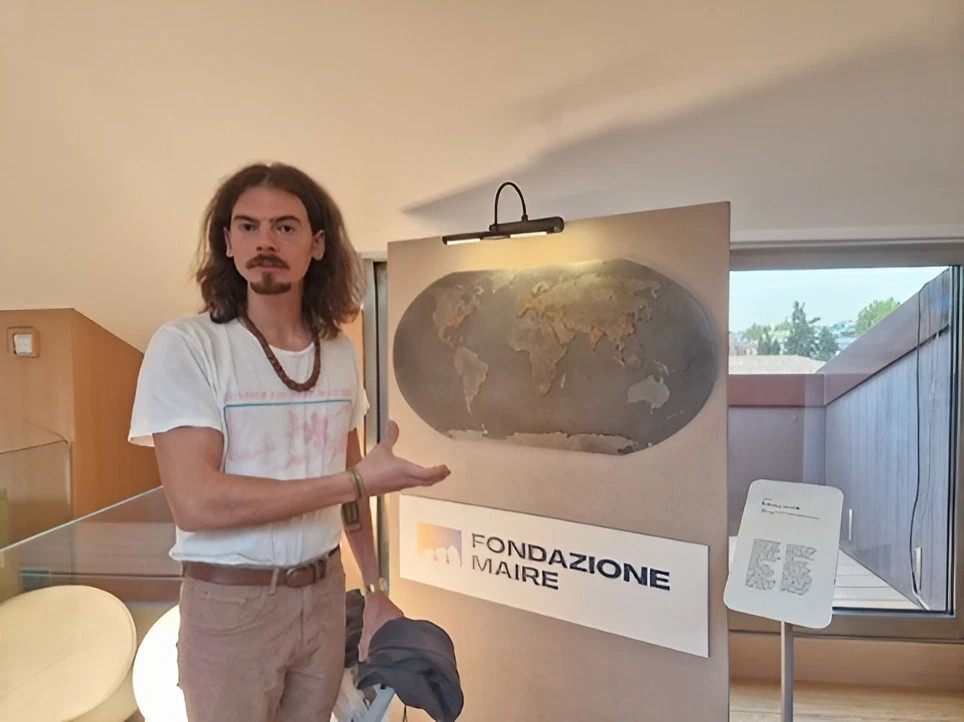
Uniting art, beauty, and environmental sustainability. This is the objective of “Second Life: Everything Returns,” a contest promoted by Tuscan environmental and energy multiutility Alia Servizi Ambientali, with the MAIRE Foundation as main partner, to promote and reward the works of young artists who use their creativity to address our relation with sustainability, a key value for the current generations.
Nearly one hundred Italian artists, no older than 29, accepted to tackle the vision of sustainability spelled out in the UN Agenda: “meeting the needs of the present without compromising the ability of future generations to meet their own needs.”
The finalist works, selected by a qualified jury composed of representatives of the main Tuscan cultural institutions, allow us to employ art to reflect on the importance of daily activities that safeguard the environment and give a second life to waste, as per the 4 Rs: refuse, reduce, reuse, and recycle. Indeed, these issues are not only the focus of the sustainable development goals, but also of the industrial strategy of the Maire Group, which is active in the development and implementation of integrated engineering technology and services for the energy transition. In short, art and humanist engineering can work together towards a common objective: focusing on the planet’s sustainable future.

“impactful material solidity perfectly represents the global vision, the urgency to intervene in the area of sustainability and promote the reuse of materials, that is so closely aligned with the actions of the Maire Tecnimont Foundation.”
Federico FerroniDecayThe MAIRE Foundation advances the diffusion of scientific content and develops socio-economic studies, along with the creation of a center of excellence for the development of skills, to promote the Group’s historical heritage, using art and culture as a vehicle for communication, networking, and supporting educational initiatives and projects in collaboration with universities for the benefit of local communities.
And this is why, for the second year in a row, the Maire Foundation is supporting the “Second Life: Everything Returns” contest. The final exhibition of the contest was held at the MAIRE Foundation offices in Rome on September 20.
Amongst the finalist works, the MAIRE Foundation assigned a special mention to Federico Ferroni's “Decay,” a work created with scrap iron sheets. The jury’s motivation explained that its “impactful material solidity perfectly represents the global vision, the urgency to intervene in the area of sustainability and promote the reuse of materials, that is so closely aligned with the actions of the Maire Tecnimont Foundation.”
“I developed my work for an urgent message,” explains Federico Ferroni, who received a special mention from the MAIRE Foundation. “This is a protest work that I created with metal sheets that had been abandoned in an industrial area in my city, Ravenna.”
In perfect continuity with the circular approach of the contest, in fact, the reuse of materials is central to Ferroni’s work of art: “I used metal sheet scraps, removing the oxidation to create an image juxtaposing the famous satellite imagery of our planet at nighttime,” explains the artist.
The resulting image is clear and impactful: “the many satellite photos of our planet at nighttime reveal the light generated by urban centers, raising a strong sense of belonging and intimate awe. This work provides a counterpart to those images, an object that narrates the enormous price we pay for the magnificence of the ambitious urbanization infrastructure that our species has erected since the second industrial revolution,” points out Ferroni.
“Decay” is a work that in an evocative and efficient manner, as explained by the author, “is not against progress a priori, but aims to raise awareness on the issue of sustainable development. This will only be possible if we embrace the facts and recognize that we cannot continue living as we have in the past. We need to change our daily habits to concretely drive sustainability.”
And Ferroni’s message is in line with his choice of materials and work technique: “I used iron as it is the most abundant material on our planet. Oxidation normally represents a contamination. So, it is a metaphor of advanced human settlement. It is not a criticism against technological progress, but rather of our inability to manage it.”
Ferroni wants to drive change through art and his protest work “Second Life” is a launchpad to do so: “My work represents the hope that deterioration will only affect this map, and that empathy and reason will provide us with the awareness necessary to control our worst instincts. I’m very thankful to this contest and believe it is the right way to divulge environmental awareness – not only with science, but also through art and poetry.” And this is an approach that is shared by the MAIRE Foundation, which unites the power of art to engineering in order to reach out to everyone.
Un decennio di crescita sostenibile